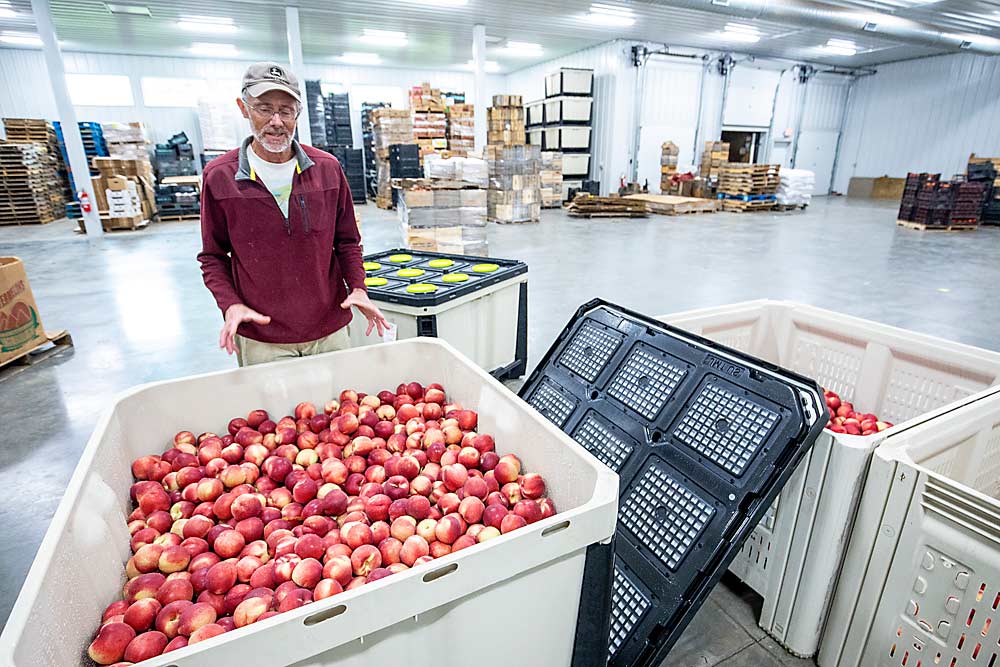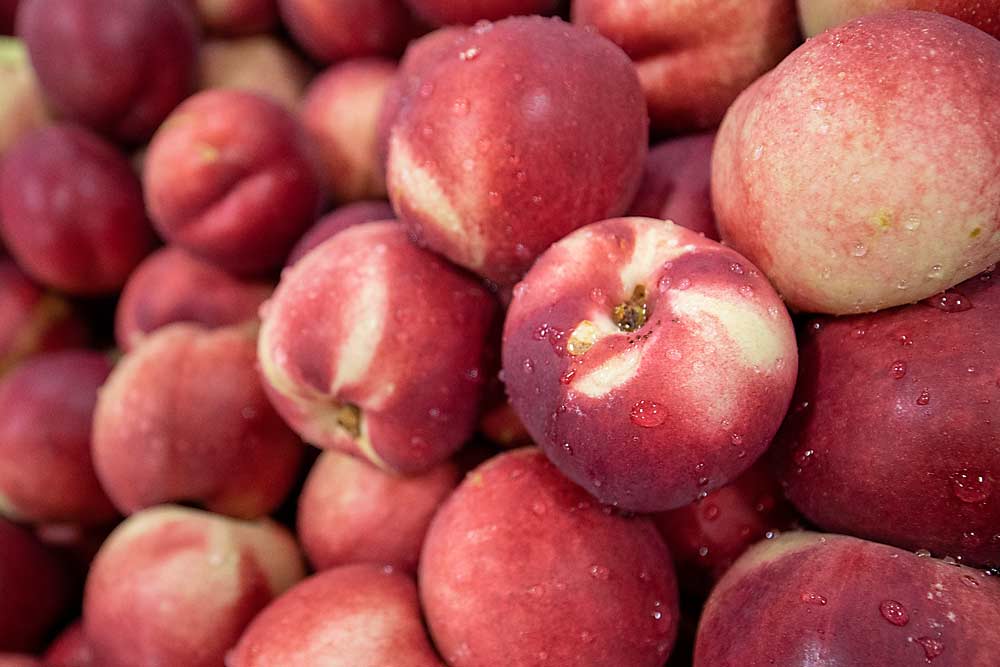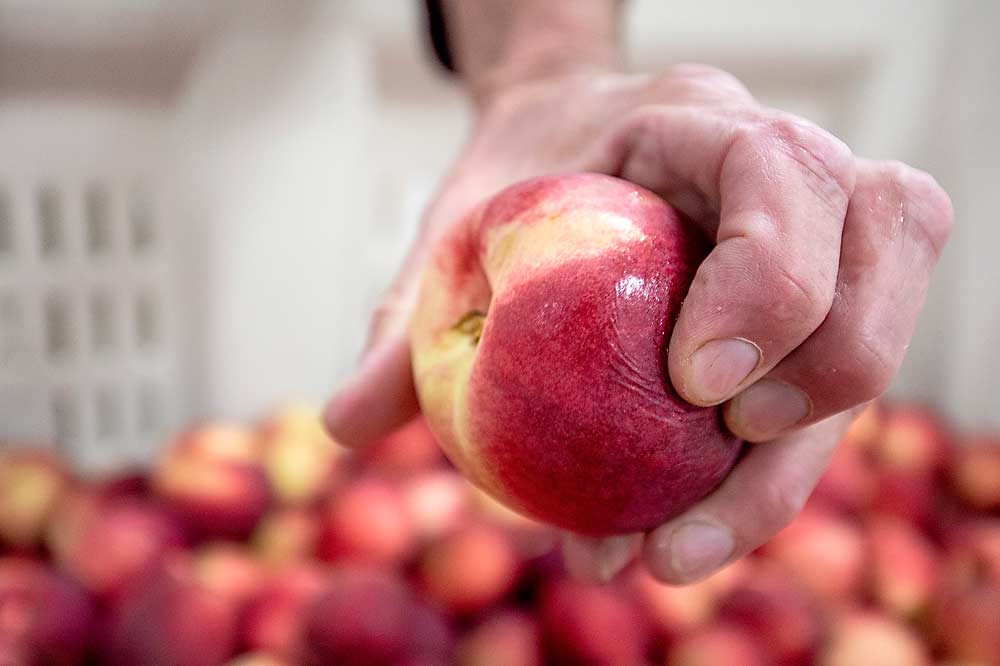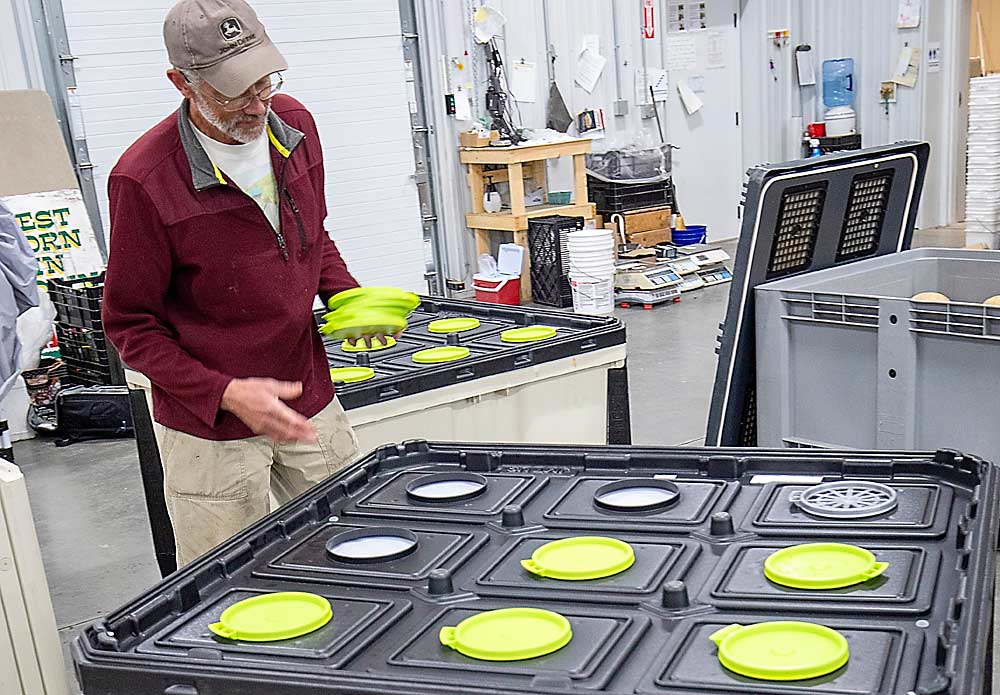
Building a controlled atmosphere storage facility is out of the question for most small and medium-sized apple growers, who can’t justify the expense. Some such growers turn to renting space in a (hopefully) nearby facility, but that has its own costs — in money, time and transportation.
A relatively new product provides another option: Filling a standard refrigerated storage space with bin-size controlled atmosphere (CA) storage units.
Twin Springs Fruit Farm in Orrtanna, Pennsylvania, uses CA bins developed by Janny MT, a French company, in its refrigerated storage facilities. The farm stores a mix of fruits and vegetables in the Janny bins and is still figuring out which crops keep best in them. But they’ve had success with apples and recommend the bins to apple growers of similar size and sales situations, said Twin Springs co-owner Michael King.


Twin Springs grows a mix of fruits and vegetables on about 225 acres west of Gettysburg, including peaches, pears, apricots and 120 acres of apples. They sell most of their produce at farmers’ markets in greater Washington, D.C., but pack or process many of their apples, King said.
Penn State University extension educator Dan Weber said the Janny bins are ideal for an enterprise like Twin Springs, a company seeking to extend the growing season for a variety of produce but that’s too small to justify building an on-site CA storage facility.
The Janny bins essentially create a miniature, isolated CA storage space within a larger non-CA cold storage unit. The bin’s lid has semipermeable membranes that regulate ethylene and oxygen content within the bin and include probes that can monitor levels of these gases to achieve optimal conditions, Weber said.
The CA bin approach caught on in Europe, where storage facilities generally aren’t as large as they are in the United States. Pennsylvania’s small and medium-sized growers, many with walk-in refrigerators, might be ideal candidates for this type of product, Weber said.

The Janny bins are stackable and transportable, and they can be disassembled to move through narrow openings. Their long-term durability, particularly of the semipermeable membranes, is still an open question, though existing bins in Adams County have held up well so far, he said.
Gemma VanderHeld, a salesperson for Oesco, a farm equipment supplier and Janny MT’s U.S. distributor, said Oesco has sold a few hundred of the bins so far, mostly in Massachusetts, New York and Pennsylvania.
Oesco salesperson Russell Peck said the bins cost $517 to $617, depending on how many you buy.
Weber is working with colleagues to set up replicated trials with area growers. So far, he’s relied on Twin Springs Fruit Farm’s experience and the results of trials conducted in Europe. Twin Springs has learned that the bins work very well for certain fruits and vegetables, but not as well for others. Apples store “amazingly” well, peaches less so, and Brussels sprouts look as if they came right out of the field after months of storage, he said.
King said Twin Springs first purchased six Janny bins a few years ago and now has 110. They’re still experimenting with different apple varieties, but if they find that the bins consistently provide equivalent fruit quality to large-scale facilities, they’ll eventually stop renting CA space and purchase more Janny bins.

So far, they’ve found that Jonagold keeps 50 percent longer in the Janny bins than in refrigerated storage. Some Fujis come out “still pretty darn good” after nearly 12 months. King is pretty confident GoldRush will do well, too, but he’ll know better by the end of this storage season.
Twin Springs has an older refrigerated storage facility on-site and recently built a new one. Their multiple crops require multiple storage configurations — and apples don’t always store well with other crops because they release ethylene gas. Each Janny bin holds about 18 bushels of apples, King said.
Janny bins do require “extra fussing” during the busy harvest season, he said. Workers have to bring the bins into the orchard, without their lids. Pickers place the apples directly into the bins. Growers have to keep close track of where the bins are needed, and when, and how many apples to put into each. The bins are taken back to the refrigerated storage facility, where the apples chill for at least 24 hours before the lids are put on. Then, the sealed bins can be stacked to save space. They stack a little more awkwardly than regular bins but can be stacked six high, King said.
—by Matt Milkovich






Leave A Comment